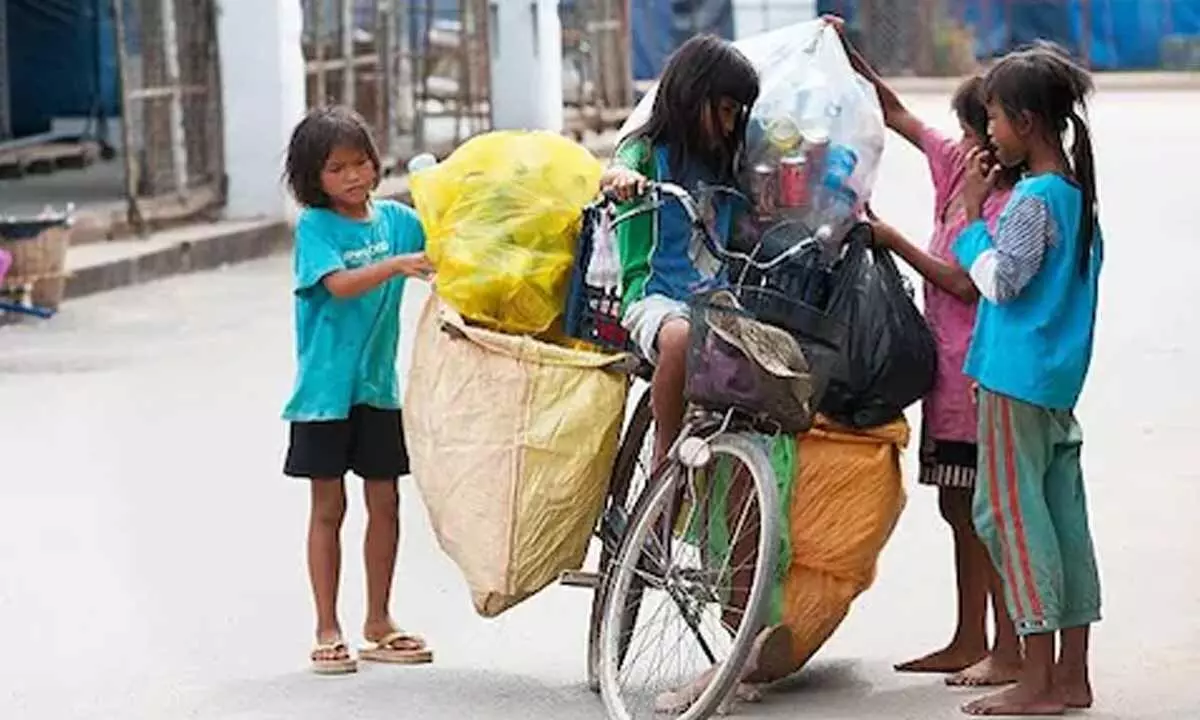Roadblocks to child labour elimination
Awareness about the issue has to be increased, and mindsets have to change to end child labour
image for illustrative purpose

A recent Rapid Assessment Study conducted by CRY suggests that a sizeable 17% of the respondents don't know what to do if and when they spot a child working as a labourer. In a country where there are an estimated 152 million children in child labour (ILO figures), such ignorance can only create bumps on way to achieving the main goal, that is complete eradication
Ignorance and lack of awareness about how to define a child labour or what needs to be done once one spots a child labour often stand in the way of complete eradication of child labour. At least that's what Child Rights and You (CRY) feels. A recent Rapid Assessment Study conducted by CRY suggests that a sizeable 17 per cent of the respondents don't know what to do if and when they spot a child working as a labourer. In a country where there are an estimated 152 million children in child labour (International Labour Organisation figures), such ignorance can only create bumps on way to achieving the main goal, that is complete eradication.
Asked whether children should be allowed to contribute in family-run holdings or operations, 45 per cent of the respondents replied in the negative. But, around 32 per cent of the respondents said they were okay with the idea of children working or taking part in family-run jobs or units. A whopping 45 per cent believe that there is nothing wrong in putting children to work, even though they attend school. Is there something very important that we are missing here?
The responses to the above questions perhaps point to the confusion, or ignorance, in the minds of the people about the child labour laws in the country. Queried on the same, 69 per cent of the respondents said they were aware of the law prohibiting the employment of children in hazardous occupations but only 33 per cent said they were aware of the term "hazardous occupations". A sizable 31 per cent said they were NOT aware of any law prohibiting child labour in the country. In West Bengal, about 70 per cent of the respondents were found not to be well-versed of anti-child labour laws.
Should children working in the entertainment industry be termed "child labour"? The question evoked a mixed response. While around 39 per cent said these children should be bracketed as "child labour", 34 replied in the negative. Around 28 per cent said they were unsure. The response is, indeed, indicative of the ambiguity that exists as regards the scope and definition of the term child labour and the related laws in the country.
How many child labourers are there in the country, as per latest data? The answer to the simplest and most straightforward question threw up quite an unexpected answer – 77 per cent of the respondents grossly underestimate the prevalence of child labour in the country. Some said that only children aged below 14 years, when put to work, can be considered as "child labour."
"The objective of the study is hence to understand the perception (Knowledge and attitude) of India's people on child labour. We believe that it's high time to pause and take a relook at where the malady lies. To prevent and end child labour, one has to first know and understand what child labour is, and also the related laws in the country. Awareness about the issue has to be increased, and mindsets have to change," said Trina Chakrabarti, Regional Director, CRY (East).
She said, "A father making his 12-year-old son run errands in a tea shop may seem innocuous to the naked eye, but think deeply. Is the child being deprived of a happier, safer and healthier childhood? The answer to this probing question and deeper analysis of the innumerable periphery issues may take us a step forward towards achieving the ultimate goal – complete eradication of child labour."

